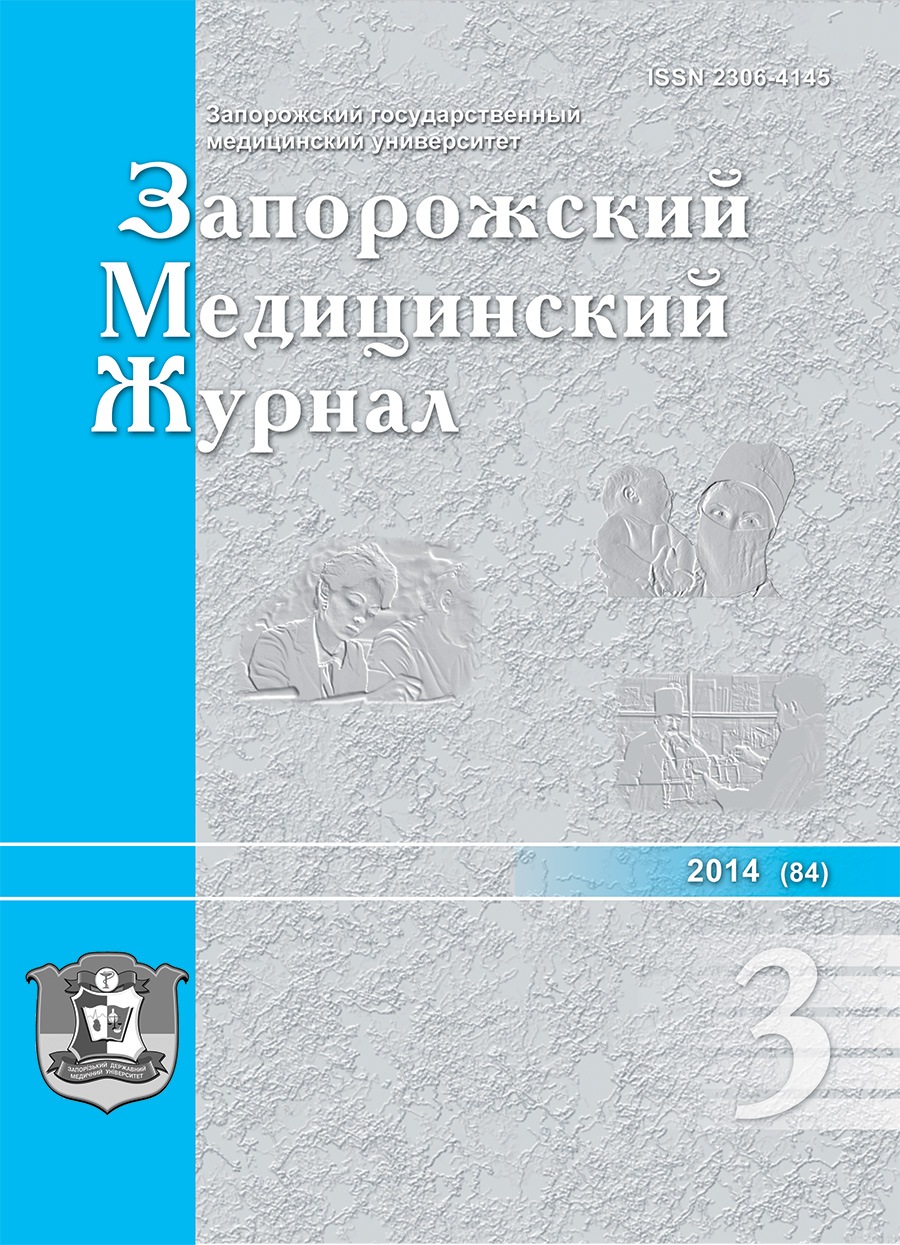Possibilities of predicting of the non-severe community-acquired pneumonia outcomes in patients with type 2 diabetes mellitus or chronic heart failure
DOI:
https://doi.org/10.14739/2310-1210.2014.3.25706Keywords:
Community-acquired pneumonia, Prognostic equation, Questioner, Treatment outcomeAbstract
Aim. Сommunity-acquired pneumonia is life-threatening disease with level of fatal events in hospitals within 12-36 %. In turn, presence of congestive heart failure or type 2 diabetes increases the risk of adverse outcomes in patients with community-acquired pneumonia.
Methods and results. In the modern world’s literature there are many models predicting clinical outcomes of community-acquired pneumonia, but none of them includes questionnaires data for such patients. In our study, we used two questionnaires: "The scale of assessment community-acquired pneumonia" R. el Moussaoui and CapSym-12. C
Сonclusion. Using logistic regression, we have found statistically significant indices sample questionnaires prognostic opportunities which were used in this study to assess the health and dynamics of symptoms of community-acquired pneumonia and that allows us to predict the outcome community-acquired pneumonia.
References
Dvoreckij, L. I. (2008) Vnebolnichnaya pnevmoniya: vzglyad terapevta. [Community-acquired pneumonia: a view of the therapist]. Consilium medicum, 3(10), 34–40. [in Russian].
Fine, M. J., Smith, M. A., & Carson, C. A. (1996) Prognosis and outcomes of patients with community-acquired pneumonia. A meta-analysis. JAMA, 275, 134–141.
Feshenko, U. I., Lynnyk, L. I., & Nedopasova, O. P. (2010) Porivnialni danni pro rozpovsiudzhennist khvorob organiv dykhannia i medychnu dopomohu khvorym na khvoroby pulmonolohichnogo ta allerholohichnoho profiliu v Ukraini za 2008–2009 riky. [Comparative data on the prevalence of respiratory diseases and medical care for patients with pulmonary disease and allergy profile in Ukraine for 2008-2009] Kyiv. [in Ukrainian].
Benfield, T., Jensen, J. S., & Nordestgaard, B. G. (2007) Influence of diabetes and hyperglycaemia on infectious disease hospitalisation and outcome. Diabetologia, 50, 549–554.
Kornum, J. B., Thomsen, R. W., Riis, A., Lervang, H., Schonheyder, H. C., & Sorensen, H. T. (2008). Diabetes, Glycemic Control, And Risk Of Hospitalization With Pneumonia: A Population-based Case-control Study. Diabetes Care, 31(8), 1541–1545. doi: 10.2337/dc08-0138.
Bereznyakov, I. G. (2009) Vnebol`nichnaya pnevmonia [Community-acquired pneumonia]. Donetsk. [in Ukrainian].
Mandell, L. A., Torres, A., Wunderink, R. G., Whitney, C. G., Niederman, M. S., Musher, D. M., et al. (2007). Infectious Diseases Society Of America/American Thoracic Society Consensus Guidelines On The Management Of CommunityAcquired Pneumonia In Adults. Clinical Infectious Diseases, 44(S2), S27–S72.
Moussaoui, R. E., Opmeer, B. C., Borgie, C. A., Nieuwkerk, P., Bossuyt, P. M., Speelman, P., et al. (2006). Long-term Symptom Recovery and Health-Related Quality of Life in Patients With Mild-to-Moderate-Severe Community-Acquired Pneumonia. Chest, 130(4), 1165–1172.
Lamping, L., Schroter, S., & Marquis, P. (2002) The Community-Acquired Pneumonia Symptom Questionnaire : A New, Patient-Based Outcome Measure To Evaluate Symptoms in Patients With Community-Acquired Pneumonia. Chest, 122, 920–929.
(2007) Nakaz Ministerstva ohorony zdorovia Ukrainy Pro zatverdzhennia klinichnikh protokoliv nadannia medychnoi dopomohy za spetsialnistiu «Pulmonolohiia»: vid 19 bereznia 2007 roku № 128. Kyiv. [in Ukrainian].
Downloads
How to Cite
Issue
Section
License
Authors who publish with this journal agree to the following terms:
Authors retain copyright and grant the journal right of first publication with the work simultaneously licensed under a Creative Commons Attribution License that allows others to share the work with an acknowledgement of the work's authorship and initial publication in this journal. 
Authors are able to enter into separate, additional contractual arrangements for the non-exclusive distribution of the journal's published version of the work (e.g., post it to an institutional repository or publish it in a book), with an acknowledgement of its initial publication in this journal.
Authors are permitted and encouraged to post their work online (e.g., in institutional repositories or on their website) prior to and during the submission process, as it can lead to productive exchanges, as well as earlier and greater citation of published work (See The Effect of Open Access)

